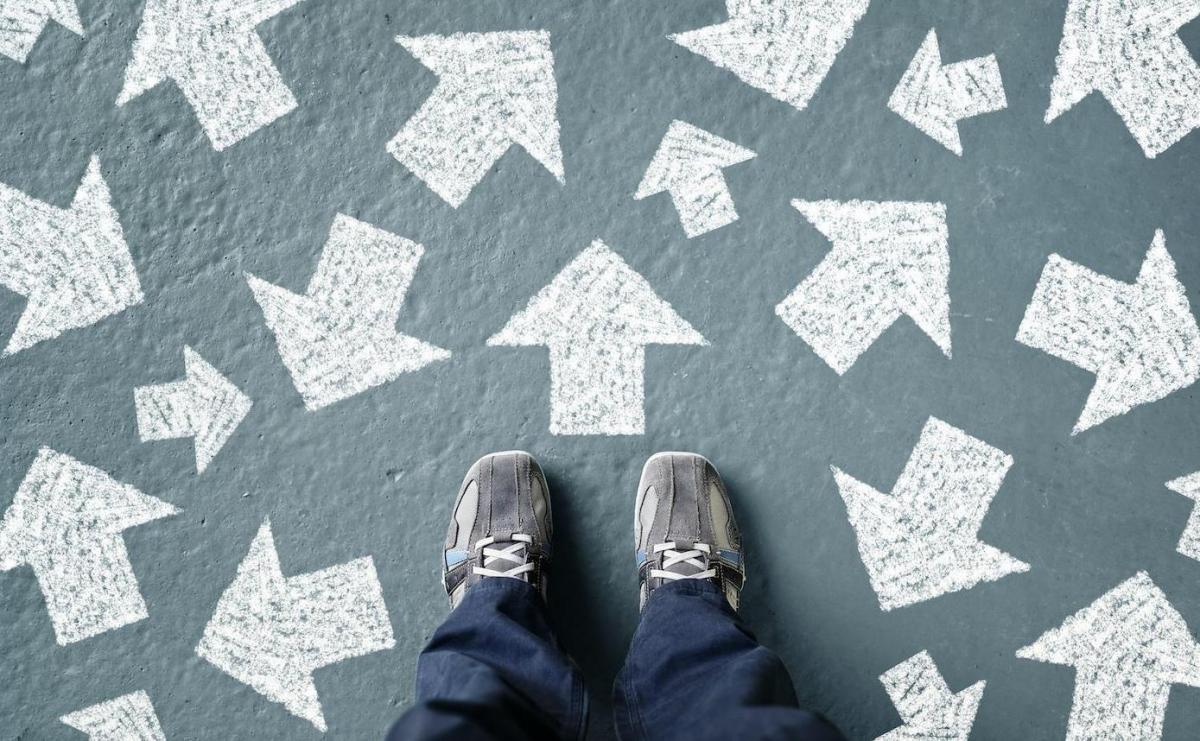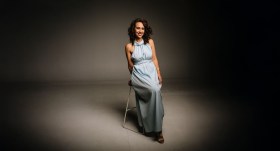At the Australia Council we’ve recently launched our new vision, Creativity connects us. Regardless of where we live, or where we’re going, or where we’re from, creativity connects us – to our First Nations heart, to over 75,000 years of living culture and knowledge and the country on which we are privileged to live.
Creativity connects us to the shared stories of millions of diverse peoples who now call Australia home; to the hundreds of communities across Australia and to a global community.
Our vision looks towards a creatively connected nation; towards greater health and wellbeing; towards future growth and prosperity.
And I am convinced that there is reason to be hopeful; because art can help us navigate these fluid times, through sharing the stories and experience of communities wrestling with change.
Arts and creativity bring people together – in rooms like this, across Australia, during the Small Halls festival. Art encourages long table conversations like the Corridor project in Cowra where artists have worked with shearers, wool classers, roustabouts documenting local stories and creating a new performance work that directly engages with the community for a community audience.
Art informs high table debates like at the Garma festival – Australia’s Indigenous equivalent of the World Economic Forum, where art and culture provide the evidence base for ambitious discussions about policy and ethics.
Our children, our next generations, are dealing with extreme uncertainty about the future of the world as we know it… In such times of environmental uncertainty art has a big role to play; art that drives new collaborations and brings unlikely people together to collaborate and address the problems that we collectively face.
Since 2014, Wollongong artists Kim Williams and Lucas Ihlein have been visiting the Mackay region working with a sugarcane farmer to gain a deeper understanding of the sugarcane industry; to investigate how artists and farmers might work together on large-scale ecological challenges. These deep social and ecological engagement informed the stories told through the exhibition Sugar versus the Reef.
The exhibition stimulated important dialogue around complex intersections between environmental management, social behaviour and cultural traditions. It connected people, whose points of view would have otherwise remained unconnected, perhaps even hardened into opposition, building shared understanding…This is an example of what art can do. How creativity can connect us. Especially in times of uncertainty and in times of emergency.
For artists are often quick to respond to the live issues we face. Like the Creative Responders, an initiative of the Creative Recovery Network. This is a podcast series that explores the power of the arts and creativity in disaster management.
Creative Responders shares stories and conversations with artists, emergency management experts, creative leaders and impacted communities from all over Australia as they prepare, respond and recover from natural disaster.
These stories and conversations provide those vital stepping stones to navigate these liquid times. Like how a sculptural forest trail in Western Australia can reunite a community after bushfire. How a tight-knit community in rural Victoria can approach recovery when its youngest residents have lost their sense of safety. How storytelling can create opportunities for connection among isolated farmers in drought-stricken communities in South Australia. And how an Indigenous-led ranger network and arts centre galvanised a North Queensland community following a powerful tropical cyclone.
These are all reasons why the arts in Australia needs to be untethered from narrow definitions of what art is, to recognise what art does, so it can move freely to the places it is needed most.And here in Tamworth [for Artstate], the home of the world’s second biggest country music Festival, the Big Golden Guitar, the Australian Country Music Hall of Fame, we have another compelling example of what art does for regional communities.
Over the last five years domestic and international visitors to regional NSW have increased by more than 40% and visitor generated income has grown by nearly 50%, to $15 billion in FY 2019.
With most overseas visitors aged between 18 and 29, this heralds a new generation of cultural tourists on a quest for understanding new places and peoples and it heralds new opportunities for regional economies and communities.
Like the Darwin Aboriginal Arts Fair (DAAF), which in its 13th year has become Australia’s most significant and internationally recognised Indigenous arts fair. And for me, a wonderful example of the significant public value a modest public investment in the arts can deliver.
This year, I was one of an estimated 15,000 visitors to an event that in 2018 generated 2.8 million dollars in art sales and 15 million dollars for the local economy; up from 10 million dollars the year before.
Because DAAF is more than a cultural exhibition, more than a contemporary celebration of First Nation Art and creativity. DAAF is an important cultural and commercial exchange, as the event tagline proclaims, ‘art is our living’.
It is an important way for visitors to support First Nation artists and their communities, which bypasses unscrupulous dealers by going direct to Aboriginal art centres.
Art Centres that are so often central to the life of communities, engendering pride in local artists and local culture and connecting these communities and Australia with an interested world.
Our recent research on international arts tourism shone a light on the pivotal role the arts play in driving tourism to Australia. The relationship between art and travel is long-standing, deep and complex.
We travel to see art. And even when art isn’t our primary destination, we naturally gravitate to the art of a place in order; to understand the meaning of that place, to understand its people, its landscape, its history.
Our research showed that international tourists who engage with the arts on their travels are more likely to be intrepid, to go beyond the east coast cities and visit regional Australia.
New Research
Later this month we’ll be publishing new research – this time, on domestic arts tourism.
We are examining the trends on how Australians connect with the arts as they travel around the country, whether on short daytrips or longer overnight stays.
This will help build the picture of Australians’ willingness to travel for the arts, of the value of the arts in helping us understand the place we are in, and the great capacity of the arts to support local economies and build stronger regional communities.
I can share that regional Australia is drawing similar overall numbers of domestic arts tourists as the big cities. And, like international tourists, Australians who visit regional areas are more likely to include the arts in the mix of their activities.
Over the last five years domestic and international visitors to regional NSW have increased by more than 40% and visitor generated income has grown by nearly 50%.
These research findings will reinforce the enormous potential of the arts in driving regional tourism and the importance of the regions to our tourism economy for both international tourists going further afield and for Australian travellers exploring their own country, which creates great public value.
And by public value I mean the economic value, the importance of our creative sector in our future prosperity, to thriving regional towns and cities. I mean the social value that is created in through supporting the wellbeing of our regional communities. I mean the cultural value, in the expansion and celebration of our cultural identity, and in shaping how we are seen by visitors to our country.
Driving regional tourism is but one example of why investing in Australian creativity is investing the wellbeing and prosperity of all Australians.
At the Council, we are also being intrepid, shifting to a language of creativity has taken the conversation outside our usual environments. It has led us to consider other forms, other disciplines, other points of view. Other ways of thinking, that are unburdening art of its objects, allowing it to travel more freely as a service, allowing it to deliver greater public value across multiple dimensions.
We’ve only just started walking towards more socially engaged art. But there is good reason to be hopeful, to believe in the future. To believe we can become a creatively connected nation.
Because by broadening the conversation we’re not walking alone. We’re walking alongside others, from other disciplines, with other ideas. [And] in the footsteps of communities already exploring the public spaces we want art to reach. Communities already realising the social value we want art to deliver.
That said, I am fully aware our vision needs to support more than creative conversations.
For regional artists struggling to make a living and for towns and cities wrestling with change, or disruption, or disaster. Our vision needs to offer more than metaphors. If we are to properly champion regional arts and creativity, our vision needs deliver more than words.
And it can.
As the steps we take, the investments we make, are guided by priorities that focus our actions. Priorities that recognise all Australians deserve more opportunities to be captivated and inspired by arts and creativity, wherever they live.
Priorities that understand our art must reflects us, not just some of us, so we must have equity of opportunity and access in our creative experience, workforce, leaders and audiences.
Priorities that build on a long-term commitment that recognises the importance of First Nations peoples, self-determination, cultural authority and leadership to our collective prosperity.
Priorities that ensure our arts and creativity are thriving, by focusing our efforts on those things that will create the best circumstances for a thriving arts sector.
And through greater advocacy, priorities that will increase awareness of the value of public investment in arts and creativity.
Priorities that will bring about change, which at times may feel slow in coming, but which has already started. Like the recently announced changes to arts organisations funding through the National Performing Arts Partnership, changes that will make this funding more transparent, more flexible and more contestable and more supportive of a regional arts ecosystem.
One of the first steps to implementation is a scan of how performing arts touring is serving regional and remote Australia. Much has changed in the twenty years or so since the prior funding models were put in place. It’s time to take stock and respond to contemporary conditions.
So, in closing, in this era of uncertainty – in these liquid times – art can help keep us afloat if unburdened of its objects and untethered from narrow definitions.
Art can guide us towards more certain ground.
This article is based on Art in an age of uncertainty, the Adrian Collette’s keynote at Artstate Tamworth 2019.





